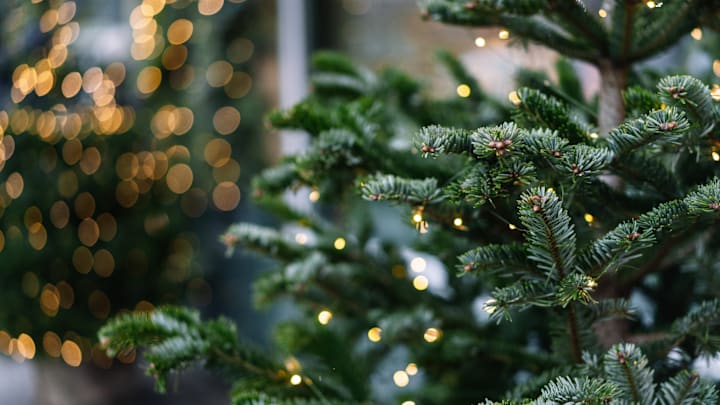What’s the environmentally safest way to dispose of your Christmas tree? It’s hard to say. If it’s grown, managed, transported, and recycled efficiently, a real Christmas tree’s environmental impact should be near neutral. Unfortunately, not all Christmas tree farms are equal in their environmental impact.
The most eco-friendly way to treat a Christmas tree would be to leave the tree in the ground, where it belongs, so that you never have to dispose of it. Of course, then you wouldn’t have one in your house to bring festive cheer. One thing you can do is be environmentally smart when it comes to the tree's disposal. When it's time to say goodbye to this year’s Christmas tree, why not try one of these eco-friendly methods?
- Turn your Christmas tree into mulch
- Get crafty with your Christmas tree
- Use your Christmas tree in your garden
- Recycle your Christmas tree
- Donate your Christmas tree
- Eat your Christmas tree
Turn your Christmas tree into mulch
If you’re lucky enough to have access to a large wood chipper, you may be able to chip the entire tree. Woodchips make a great decorative landscaping material (giving you a head start on spring).
Get crafty with your Christmas tree

If your tree hasn’t yet let go of its needles—and you haven’t yet let go of Christmas—get crafty with it. Cut off small branches and bind them around a circle of wire to make an attractive wreath. This looks even better if some of the cones are still attached. If you’re feeling really adventurous, you could set up an essential oil extractor to get a supercharged Christmas scent. If you are already distilling alcohol, you have everything you need (here's how to do it). With a little less effort and equipment, you can make a weaker liquid called hydrosol, which is a fragrant condensate water containing water-soluble parts of the needles—all of which is much easier to do than it probably sounds.
Use your Christmas tree in your garden
Many legumes, such as garden peas, are thigmotropic, meaning they respond to objects they touch, growing in coils along or up them. Needle-free Christmas tree branches have lots of twigs, texture, and knobby protrusions for peas and beans to get a grip on. This allows them to grow upwards strongly toward light. Simply stick a small tree branch in the soil next to each new shoot for a free, effective legume-climbing frame. Another advantage of this technique is that it makes grazing animals less likely to munch those tender green shoots, as they tend to avoid getting Christmas tree twigs spiked up their noses. You can also strip the branches off your tree and use them to protect delicate plants from snow.
Recycle your Christmas tree

Come January, it’s cold, the festivities are over, work looms, and you’ve got too much on your mind to be thinking about dead Christmas tree horticulture or crafts. Fortunately, a simple solution is at hand: Remove all of the ornaments and lights and take it to the curb. Many municipal trash collection services will pick up your tree and mulch it to be used for landscaping public spaces and parks.
If your city or county doesn’t provide curbside pickup, it may operate Christmas tree recycling points where you can take your tree for chipping. Some “TreeCycle” points will even exchange your tree for a bag of wood chips or chip mulch. OK, this probably means that you’ll have to jam that Christmas tree into your car once more, but Christmas tree recycling is a quick and easy, environmentally friendly option.
Donate your Christmas tree
After you’ve had your Christmas cheer, why shouldn’t fish have some fun? Several communities have programs in place where they’ll take your old Christmas tree, drill a hole in the base, tie a brick to it, and throw it into a lake to create a new fish habitat. When humans create artificial lakes, they tend to be relatively featureless on the bottom for easy dredging. That’s great for us, but it means baby fish have nowhere to escape predators. Christmas trees provide a nice, temporary place for the fish to hide out and explore.
If, on the other hand, you’d like to see your Christmas tree mauled by a pride of lions, that’s OK too! Some zoos around the world take Christmas tree donations (but please remove all the tinsel and tinsel alternatives first) and allow the animals to play with them.
Eat your Christmas tree

Some Christmas trees are edible (not cypress, yew, and cedar—those are poisonous). If you have a chemical and pesticide-free tree, though, you can chow down on your holiday decor. How to Eat Your Christmas Tree, a 2020 cookbook by Julia Georgallis, is full of both sweet and savory recipes.
Read More About the Holidays Below:
An earlier version of this story ran in 2015; it has been updated for 2024.
